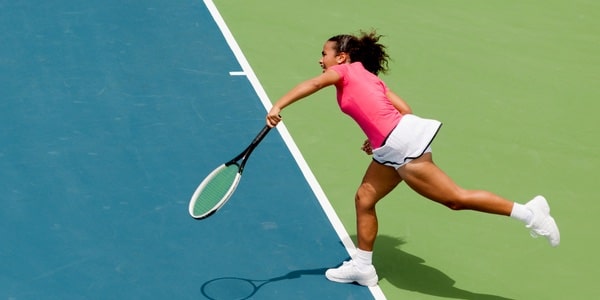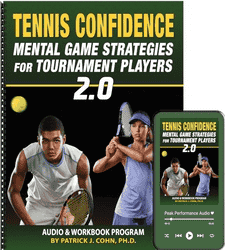
Developing a Preshot Routine
Do you have any superstitions regarding your tennis play?
Do you have a prematch routine you follow before tennis matches?
Do you know the difference between superstitions and prematch routines?
In the world of tennis, players engage in various rituals, routines and superstitions. Often these terms are used interchangeably but routines are quite different than superstitions.
Serena Williams is one of the most successful female tennis players of all time who follows a strict set of behaviors for tennis tournaments.
SUPERSTITION: Serena wears the same pair of socks throughout a tournament run.
ROUTINE: Serena bounces the ball five times before her first serve.
Highly-ranked Maria Sharapova also engages in a unique order of actions during tennis matches.
SUPERSTITION: Sharapova avoids walking or standing on court lines.
ROUTINE: Prior to her serve, Sharapova turns her back on her opponents, walks away from the baseline and fiddles with her racquet strings.
What is the difference between a routine and a superstition?
Superstition is the belief that something has significant power or “luck” with no logical reasoning behind it.
A routine is a sequence of actions that prepare you physically, emotionally and mentally for a match or point.
Superstitions are developed in hindsight, after an athlete has a particularly good (or bad) performance.
A routine is a designed, pre-planned and used to help you focus and prepare–they are based on science, not luck.
In short, superstitions are unfounded, illogical beliefs while routines are a series of conscious, deliberate actions that guide a tennis player’s behaviors before or during matches.
What are the benefits of a pre-shot routine?
- A routine gives you a sense of control over what you are doing.
- A routine internally signals readiness and prepares you for the current point.
- A routine helps you release the last point and focus on the present moment.
- A routine helps you to manage your emotions during the ups and downs of a tennis match.
- A routine focuses your thoughts and behaviors on what you are currently doing and your strategy for the next point.
What are the components of a pre-shot routine?
Your between point routine should be personal and comfortable for you.
Your routine can include:
- a cue for releasing the last point (playing with your strings)
- your stance (placement of your feet and body position)
- bouncing the ball and designated number of times
- focusing on the feel of the ball or racquet handle
- getting into a rhythm (rocking side to side)
- honing in on your target
- deciding on your type of serve
- repeating a phrase to yourself, etc
Try these tips to develop effective pre-point routines:
- Tip #1: Develop a prepoint routine for both serving and receiving. In training, practice your routine consistently, on every point. Make it a habit and part of your game. The goal is to help you focus on preparation for the next point: Plan, Visualize, Focus.
- Tip #2: When playing, commit to this routine no matter the score, no matter what what happens during the course of the match and no matter who you are playing against or what happened in the last point.
Successful tennis players have learned how to perform with ultimate confidence in tournaments. We’ve developed Tennis Confidence: Mental Toughness For Tournament Players to help you do this.
Related Tennis Psychology Articles
- Do Tennis Players Benefit From Superstitions Or Routines?
- Tennis Psychology and Your Focus in Matches
- 5 Mental Strategies of a Prematch Routine
- Download our a FREE Tennis Psychology Report
*Subscribe to The Tennis Psychology Podcast on iTunes
*Subscribe to The Tennis Psychology Podcast on Spotify
Improve Your Mental Game for Tennis
Tennis Confidence 2.0

“Tennis Confidence: Mental Game Strategies for Tournament Players” is an audio and workbook program to help tennis players, coaches, and instructors improve the mental game of tennis is just 10 easy to learn sessions. Tennis Confidence: Mental Game Strategies for Tournament Players Audio and Workbook program is ideal for any junior, collegiate, and tour professional player. Tennis coaches and instructors would also be wise to teach the strategies “Tennis Confidence.”
Tennis Confidence is a complete mental training program developed Peak Performance Sports. You learn the same strategies Dr. Cohn teaches his tennis players to help them improve mental toughness and consistency – from managing unrealistic expectations to coping with perfectionism.
Read more about Tennis Confidence Program>>
Solid article. The breakdown of the differences between a routine and superstition are clear.
I’m always intrigued to learn about the superstitions of certain athletes. Seems most have something they are superstitious about.